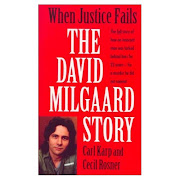In the late 1950s and early 1960s, the public broadcaster began developing programs that would re-shape television journalism for the next few decades. Programs like Close-Up, Inqui’ry and ultimately This Hour Has Seven Days utilized a set of techniques designed to hold powerful interests to account and get closer to the truth of important issues.
In 1963, producers Patrick Watson and Douglas Leiterman drew up a document that would become the manifesto for Seven Days, which was destined to become CBC’s most popular and controversial program. It had three main planks:
- A Film Report: The mainstay of the magazine will be the film report with live links covering in energetic style the significant current affairs of the week.
- An Investigative Report: Using special camera techniques we will probe honesty and hypocrisy.
- A Hot Seat would be a tough encounter with a prominent guest who is hot in the news and prepared to be grilled.
In one interview, with cabinet minister Mitchell Sharp, LaPierre violated every convention of modern questioning technique by kicking things off with the statement: “The affairs of this country are in a hell of a mess,” and then waiting for a response. This resulted, as it often did, in a lively exchange.
Most famously, he allowed his passion and emotions to shine through in a piece about Steven Truscott, a story the program had adopted as a recurring symbol of injustice. Another interview with John Diefenbaker led to a formal complaint by the former prime minister.
What LaPierre was doing wasn’t accidental. Leiterman firmly believed that interviewers had to adopt a devil’s advocate stance for maximum impact. As for Watson, he saw the accountability interview as one of the CBC’s main contributions to investigative journalism in the early 1960s. But it couldn’t be just any kind of interview.
“I began to realize that careful, thoughtful, reasonable discussion was not what held viewers to the screen,” Watson wrote in his memoirs. “It was vigorous dispute and strong images that did the trick.”
With such a deliberate stance, it proved difficult to strike a balance between provocative investigative work and stunt journalism – and Seven Days would often serve up helpings of both. But its serious work had the most lasting impact. LaPierre’s persistent pillorying of people in power served to steer the program away from what Watson considered at the time to be the typical CBC program’s deference to the establishment.
The problem, of course, was that it wasn’t just interviewees who were being provoked. The government didn’t much like what LaPierre and Seven Days were doing, and it wasn’t hesitant in passing along its displeasure to CBC management.
The overt ideological battle between producers and managers became evident in some of the internal documents that became public in the wake of the program’s death. An internal management memo in 1966, commenting on a Seven Days satirical song about U.S. policy in Vietnam, noted: “This is just one example of a long series of straight and light items which made fun of or criticized the U.S. involvement in Vietnam. These skits do not appear to contravene any specific corporation policy, but they are in bad taste.”
Even though Seven Days was drawing a record audience of 3.2 million, the program was cancelled after just two years on the air. LaPierre’s CBC career was short but memorable. He returned to academic pursuits, and eventually entered the political arena.
People who are hot in the news today are far less willing to be grilled than they were 50 years ago. A platoon of communications and public relations advisors stands between journalists and prominent newsmakers, making it difficult for accountability to be captured in its most basic form.
Sadly, too many journalists are now pressured into accepting email responses to their questions. Those responses are often designed to dodge the real accountability issues, but the lack of back-and-forth means that key questions remain unanswered.
It might be refreshing for a younger generation of journalists to revisit LaPierre’s flamboyant but persistent style of truth-seeking, and adapt it to a modern context. There are still plenty of people around who need to be provoked.





